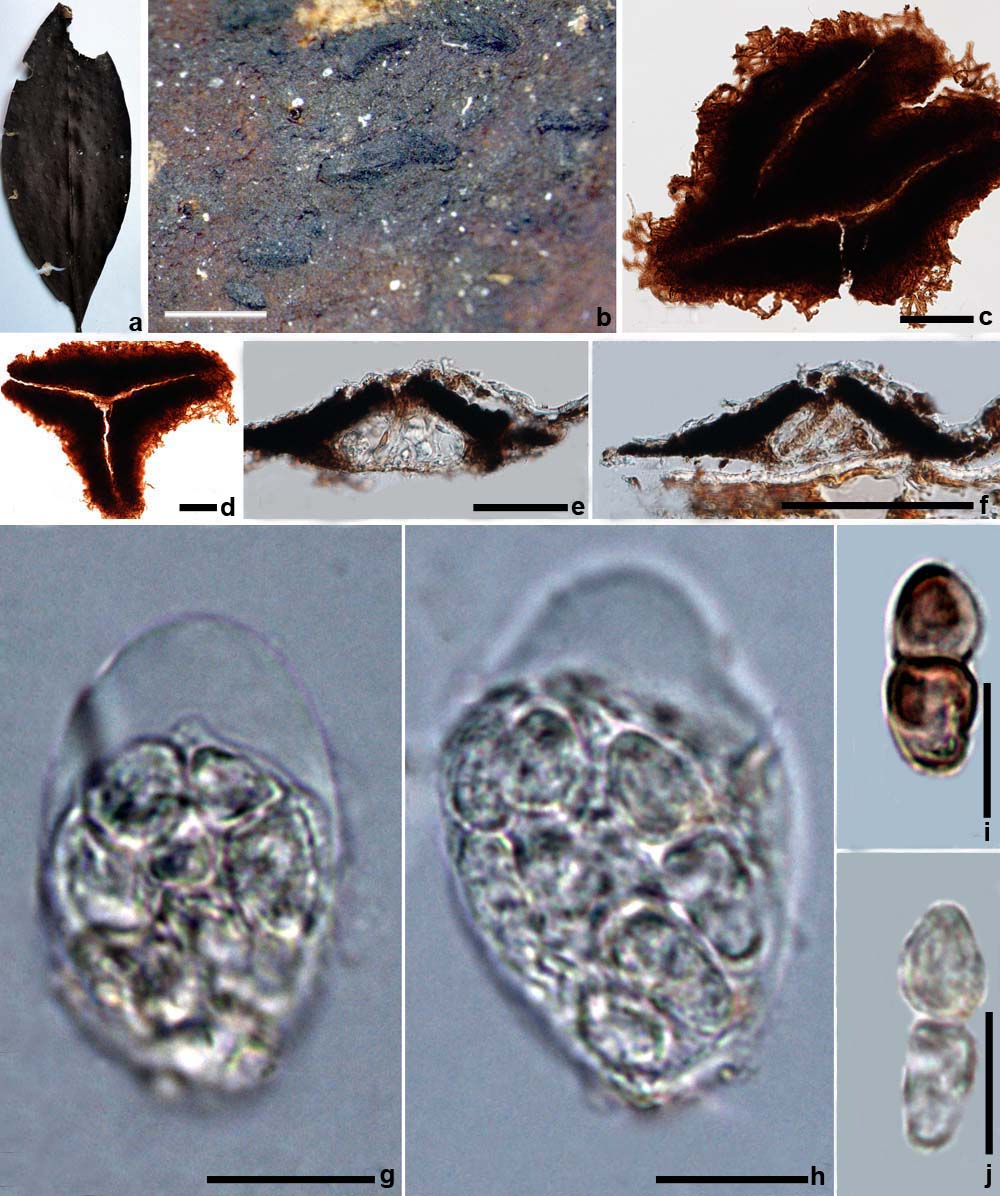Lembosia bomjardinensis (Bat.) Hongsanan & KD Hyde, comb. nov. Index Fungorum number: IF550718.
≡ Yamamotoa bomjardinensis Bat., Publções Inst. Micol. Recife 291: 12 (1960)
Type: URM 12718.
Epiphyte on leaf upper surfaces. Superficial hyphae not observed. Sexual state: Thyriothecia gregarious, scattered, superficial, easily removed from the host surface, Y-shaped, black. Pseudoparaphyses not observed. Asci 26–32×16– 20μm (x = 30×19μm, n=10), 8-spored, bitunicate, subglobose to globose, apedicellate, with a thick hyaline apical region, lacking an ocular chamber. Ascospores 15– 20×5–9μm (x = 17×6μm, n=10), overlapping 4–5 seriate, oblong to obovoid, with broad to narrowly rounded ends, hyaline, brown when mature, 1-septate, slightly constricted at the septum, wall slightly roughened. Asexual state: Mitteriella-like and Clasterosporium-like, hyphomycetous, conidia 3–5-septate, dark brown, smooth, 20–25×10–12μm. A spermatial pycnidial state has been reported for this species (asexual state from Sivanesan 1984).
Material examined: BRAZIL, Bahia, Santo Amaro, Bom Jardin, on leaves of Roupala elegans Pohl (Proteaceae), 22 February 1959, A.C. Batista (URM 12718, holotype).
Notes: Yamamotoa bomjardinensis is synonymized under Asterina based on their similar morphology.
Fig. 1 Lembosia bomjardinensis (holotype). a, b Thyriothecia on the upper surface of the leaves. c, d Thyriothecia in the lactic acid. e, f Vertical section of the thyriothecium in cotton blue reagent. g, h Asci. i, j Ascospores. Scale bars: b=0.5 mm, c–f=100μm, g–j=10μm

